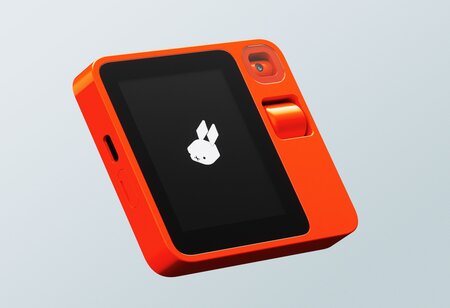Rabbit R1: The Innovative Pocket-Sized AI Device Redefining Personal Assistants
By Consultants Review Team
 AI startup Rabbit has introduced a groundbreaking device, the Rabbit R1, at CES 2024, selling over 10,000 units within a day of its launch. Resembling a square-shaped Game Boy, this versatile device operates on the Rabbit OS and offers touchscreen features, walkie-talkie capabilities, and camera functions, positioning itself as more than just a smartphone replacement. While it shares similarities with voice-activated assistants like Siri and Alexa, Rabbit R1 stands out by providing a tangible interface for users, enhancing reliability.
AI startup Rabbit has introduced a groundbreaking device, the Rabbit R1, at CES 2024, selling over 10,000 units within a day of its launch. Resembling a square-shaped Game Boy, this versatile device operates on the Rabbit OS and offers touchscreen features, walkie-talkie capabilities, and camera functions, positioning itself as more than just a smartphone replacement. While it shares similarities with voice-activated assistants like Siri and Alexa, Rabbit R1 stands out by providing a tangible interface for users, enhancing reliability.
Designed to streamline various tasks, Rabbit R1 enables users to send messages, make calls, and access services such as Spotify and Uber directly, eliminating the need for a smartphone. The device boasts its own virtual assistant, capable of handling complex instructions. Unlike traditional assistants, Rabbit R1's physical interface simplifies interactions, allowing users to navigate different functions seamlessly without juggling multiple apps.
The device is not just about voice commands; it incorporates a 2.3GHz MediaTek Helio P35 processor, 4 GB RAM, and 128 GB storage. With USB-C connectivity, an "all-day" battery life, and a SIM slot, Rabbit R1 ensures continuous internet connectivity for optimal functionality. Priced at $199, approximately Rs 16,500, the device is currently available for purchase in the US, with its global availability yet to be confirmed.
CEO of Rabbit clarified in an interview that while the Rabbit R1 has the potential to replace smartphones in the future, it currently aims to coexist alongside them. The device's physical interface, innovative features, and ease of use have sparked significant interest, making it a noteworthy addition to the AI landscape. The Rabbit R1's success on its launch day indicates a growing market demand for intuitive and tangible AI devices that offer more than traditional smartphones or voice-activated assistants.
With its unique approach to AI integration and multifunctionality, the Rabbit R1 has not only attracted consumer attention but also opened up possibilities for reimagining personal assistants and the role of physical interfaces in AI-driven devices.



